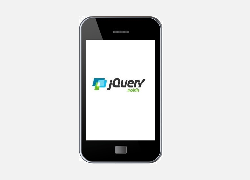
In this digital world, where around 40% of the world population is connected to the internet, it is very clear that having an online presence is necessary to run a successful business. The numbers speak for themselves; a simple website can open your doors to a potential customer base of 40% of the world. And when you add to it the tremendous growth of smart devices, be it phones or tablets, a mobile app takes your business right into the hands of your customer making it a major point of engagement. So, it’s vital for your business to keep up with time and have the offerings of your website accessible on mobile devices.
Easier said than done though!! When we talk about mobile devices they consist of smartphones and tablets which are further segmented according to platforms mainly, iOS, Android, Blackberry, Windows etc. To further complicate things, they also come in various form factors.
So, for a small business or a startup looking to make it big, building a website for its desktop users and then building mobile apps for all these different phones would cause a huge hole in the pocket.
Moreover, the time it would take to get an application ported to all different platforms is definitely not encouraging.
Thankfully, HTML5 and CSS3 help us develop and deploy web apps which can be operated across myriad operating systems, devices and web browsers. They offer the following benefits in developing web based mobile apps:
- Multi-platform development in cost effective manner
- Consistency across multiple browsers
- Ability to work offline- using HTML5 application cache
- HTML5 supports Geolocation
With the accessibility issue solved, another major factor one needs to tackle when developing a web based mobile app is to adhere to the native look and feel of the application. We have quite a few UI frameworks that help bridge the gap between a native and a web based mobile app like jQuery mobile, Sencha, Xui etc. Out of these, the jQuery mobile framework with its ease in development, excellent third party support feature and minimal learning curve, is the most popular one.
jQuery mobile utilizes UI widgets also known as jQwidgets which help in easy development of cross browser and responsive web apps. The widgets also come with native themes for mobile operating systems like iOS, Android, Windows Phone 8, Blackberry etc. These widgets enable your web app to automatically render your application according to the device and OS type currently using it. Some native device features provided by jQuery mobile framework are:
- Tab Bar Controller which is similar to UITabBarController in iphone and Android.
- Android like DatePicker Control.
- Listviews which are similar to UIListview controller of iPhone and Android.
- jQuery mobile themeroller makes it mighty easy to create UI templates and all of it absolutely free.
Currently jQuery 1.4 is the latest release and has come up with many performance improvements like faster widget creation with less markup added to the app, new set of SVG icons, simpler theme inheritance and a new modernized theme. These enhancements have made jQuery mobile framework more lightweight and powerful.
jQuery mobile along with being an open source framework helps integrate HTML5, CSS3, jQuery and JqueryUI into one framework that really simplifies mobile web applications development, making it a favorite amongst development teams around the globe. Having said that, web apps are by no means a replacement of native apps. Native mobile apps still lead the way and provide a much better user experience – one of the major defining factors in app adoption.






